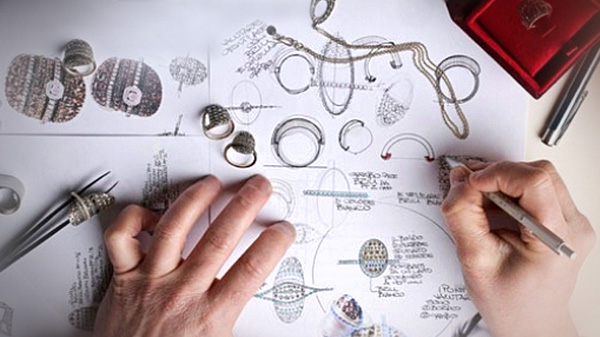Jewels have always been a source of fascination, obsession and intrigue. Precious stones have been the inspiration for heist movies, romance novels and murder mysteries ever since we started putting pen to paper. In the case of these beguiling bedazzlers the truth is even stranger than fiction.

The Nawanagar Necklace
In 1931, Jacques Cartier was commissioned by the Maharajah of Nawanagar to create a necklace formed of two strands of diamonds. Eight weeks later Cartier declared the arrangement “the finest cascade of coloured diamonds in the world”. The illustrious treasure featured seven of the rarest diamonds in the world, including the Ranjitsinhji diamond, and weighed six pounds. It mysteriously disappeared after the Maharajah’s death in 1933 and is presumed to have been broken down into smaller untraceable designs. If that sounds familiar it was also the fate that befell “Le Toussaint”, the fictional necklace which was the target of the grand heist in the movie Ocean’s 8, the design of which was based on this very necklace.

The Black Star of Queensland
In the 1930s, a boy called Roy Spencer was playing in a field near Anakie in Queensland Australia. He found a large, heavy greyish stone and carried it home with him, where it was used to prop open the porch door for the next nine years. Once Roy’s miner father Harry clocked that his doorstop might be worth a buck or two, he put it up for sale. It was eventually bought by Armenian jeweller Kazanjian who studied the stone for two months before cutting it. In cutting out the cabochon, Kazanjian lost 423 carats before finally revealing an immaculate six-pointed star within the stone – despite the lost carats, The Black Star remains the second-largest sapphire in the world. The stone now belongs to Swiss Gabrielle Grohe after she purchased it for her then-boyfriend Jack Armstrong. After they split Armstrong tried to claim ownership of the sapphire but couldn’t come up with the cash to buy Grohe out.

The Moon of Baroda Diamond
Fewer gems can boast a more impressive lineage than the Moon of Baroda, which came from the very same Golconda mine which bore the Koh-I-Noor and the Hope diamonds. From the mine The Moon went to the Gaekwad family, the Maharajas of Baroda, who lent it to the Empress Maria Theresa of Austria for a period. It has been looted by Persian ruler Nadir Shah before being returned to Baroda and lent to Marie Antoinette before being bought by Meyer Rosenbaum in 1943. The diamond was finally cemented in pop culture history when it was lent by Rosenbaum to Marilyn Monroe so she could wear it in the iconic hit Gentlemen Prefer Blondes.
But the extraordinary story of The Moon of Baroda is far from over. The pendant is coming up for auction at Christie’s Hong Kong on 27 November. Weighing 24.04 carats the canary yellow stone is estimated to go for a staggering HK$4-6 billion. Fancy!
Text: Alice Duncan



